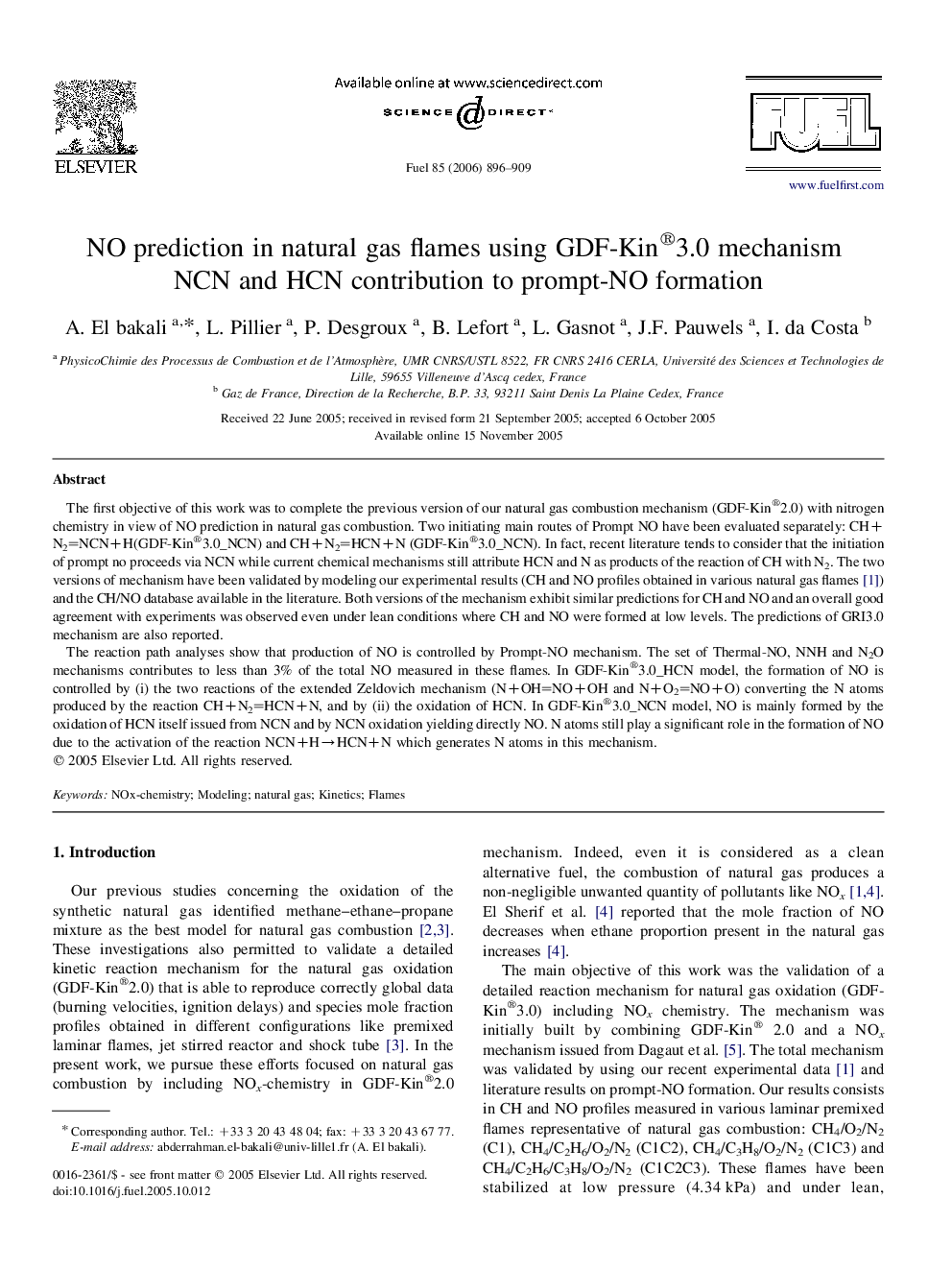| کد مقاله | کد نشریه | سال انتشار | مقاله انگلیسی | نسخه تمام متن |
|---|---|---|---|---|
| 208654 | 461260 | 2006 | 14 صفحه PDF | دانلود رایگان |

The first objective of this work was to complete the previous version of our natural gas combustion mechanism (GDF-Kin®2.0) with nitrogen chemistry in view of NO prediction in natural gas combustion. Two initiating main routes of Prompt NO have been evaluated separately: CH+N2NCN+H(GDF-Kin®3.0_NCN) and CH+N2HCN+N (GDF-Kin®3.0_NCN). In fact, recent literature tends to consider that the initiation of prompt no proceeds via NCN while current chemical mechanisms still attribute HCN and N as products of the reaction of CH with N2. The two versions of mechanism have been validated by modeling our experimental results (CH and NO profiles obtained in various natural gas flames [1]) and the CH/NO database available in the literature. Both versions of the mechanism exhibit similar predictions for CH and NO and an overall good agreement with experiments was observed even under lean conditions where CH and NO were formed at low levels. The predictions of GRI3.0 mechanism are also reported.The reaction path analyses show that production of NO is controlled by Prompt-NO mechanism. The set of Thermal-NO, NNH and N2O mechanisms contributes to less than 3% of the total NO measured in these flames. In GDF-Kin®3.0_HCN model, the formation of NO is controlled by (i) the two reactions of the extended Zeldovich mechanism (N+OHNO+OH and N+O2NO+O) converting the N atoms produced by the reaction CH+N2HCN+N, and by (ii) the oxidation of HCN. In GDF-Kin®3.0_NCN model, NO is mainly formed by the oxidation of HCN itself issued from NCN and by NCN oxidation yielding directly NO. N atoms still play a significant role in the formation of NO due to the activation of the reaction NCN+H→HCN+N which generates N atoms in this mechanism.
Journal: Fuel - Volume 85, Issues 7–8, May 2006, Pages 896–909